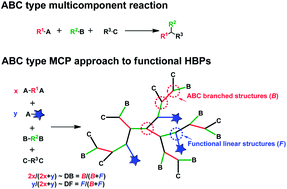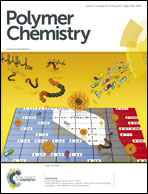Functional highly branched polymers from multicomponent polymerization (MCP) based on the ABC type Passerini reaction†
Abstract
A new synthetic approach to prepare functional highly branched polymers (HBPs) is demonstrated via the multicomponent polymerization (MCP) of easily accessible hexanedioic acid (A2), hexane-1,6-dial (B2), 1,6-diisocyanohexane (C2) and 10-undecenoic acid (A). Both the degree of branching (DB) and the degree of additional functionalization (DF) were regulated by simply varying the ratio of A2 to A.


 Please wait while we load your content...
Please wait while we load your content...